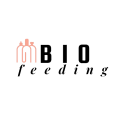The Benefits of Pace Feeding
Creating an effective feeding schedule for your baby is never an easy process. From understanding their dietary needs to ensuring their comfort during feeding, new parents are often left in a state of confusion. Amid such scenarios, the approach of pace feeding comes as a welcome sigh of relief. In this section, we will explore the advantages of pace feeding, with useful pace feeding tips, that can transform your baby’s feeding routine.
Less Risk of Overfeeding
One of the significant advantages of pace feeding is that it reduces the risk of overfeeding. This method allows your baby to have more control over the pace, resulting in a healthy and comfortable feeding experience. Overfeeding can lead to weight gain and discomfort in infants, which is why pace feeding has proven to be such a beneficial approach.
Better Digestion
Pace feeding also improves your baby’s digestion. Since your baby controls the pace, it allows the stomach to prepare for the incoming meal properly. This method leads to efficient digestion and reduces the chances of reflux, spit-ups, and gas.
Develops Bonding
Pace feeding offers a unique opportunity for parents to bond with their child. This method requires the feeder to be attentive, interpreting the baby’s signals and ensuring that the baby is comfortable. This one-on-one interaction fosters a stronger bond between the parent and the child during feeding time.
Efficient Bottle Usage
Pace feeding can result in efficient use of baby bottles. Bottle feeding often leads to babies guzzling down milk more than necessary, but with pace feeding, you can control the flow and ensure optimal usage.
Top Pace Feeding Tips
Now that we understand why pace feeding might be the answer to your baby feeding problems, let’s delve into some practical tips that can make the process more manageable for you.
- Use Slow-Flow Nipples: To give your baby more control over the pace, use slow-flow nipples. These are designed to mimic the natural flow of maternal milk and make transition to bottle feeding easier. For more information on top baby bottles, check out our previous post.
- Pace the Feed: Take breaks during the feed to ensure your baby isn’t overwhelmed. This will help prevent overfeeding and aid digestion.
- Switch Sides: Like breastfeeding, switching sides during bottle feeding can engage both sides of your baby’s body. This can provide a more balanced feeding experience.
- Maintain Upright Position: Keeping your baby in a slightly upright position during feeding can prevent ear infections and support better digestion.
Pace feeding is more than just a feeding method. It’s a holistic approach that focuses on the baby’s comfort, health, and development. For more in-depth information on the science behind baby bottle safety, make sure to visit our specific post on the topic.
A Different Perspective on Pace Feeding
Pace feeding is more than an effective feeding method; it’s a viewpoint that influences your approach to feeding your baby. In essence, it transforms a simple day-to-day activity into a full-fledged nurturing experience. A study conducted by Lactation Solutions of Princeton substantiates the benefits of pace feeding and emphasizes its importance for infant health and development.
Promotes Breastfeeding Continuation
One critical advantage of pace feeding is that it facilitates the transition between breastfeeding and bottle feeding. It does this by simulating the natural, slower flow of milk from the breast. Consequently, it discourages preference for the bottle’s faster flow, thus promoting continued breastfeeding.
Solutions to Common Bottle-Feeding Problems
Pace feeding has demonstrated efficacy in addressing common bottle-feeding problems. Babies often struggle with gas, spit-ups, and inconsolable crying due to air swallowed during feeding. By slowing down the feed, pace feeding reduces the intake of air and minimizes discomfort. Read more about bottle-feeding problems and solutions here.
Pace Feeding Supports Optimal Growth
By preventing overeating and promoting better digestion, pace feeding plays a vital role in maintaining a healthy growth rate for your baby. Infants who are pace-fed are less likely to become overweight and consequently face the associated health risks. This approach ensures that your baby’s nutrition supports optimal growth and development.
Additional Tips for Successful Pace Feeding
While we’ve already explored some beneficial pace feeding tips, understanding and implementing this method effectively may require additional guidance.
- Use the Right Techniques: Proper technique is key in successful pace feeding. The bottle should be held horizontally, and the teat should be filled with milk to prevent the baby from swallowing air. Check out this resource for more techniques.
- Recognize Your Baby’s Cues: Pace feeding is all about responding to your baby’s cues. Look out for signs of hunger or fullness, and let your baby’s behavior guide the pace.
- Involve Others: Involve family members, caregivers, or child care providers in the process. Educate them about the benefits of pace feeding and the right techniques to ensure consistency.
To best understand and reap the benefits of pace feeding, remember that it is also anchored in forming a deep connection with your baby. This nurturing practice allows you to engage with your child at a profound level, developing a bond that extends beyond meal times.
Visit this resource for more comprehensive guidance on feeding your baby, including tips to make feeding time an enjoyable experience for both you and your child.

